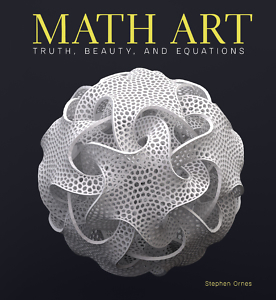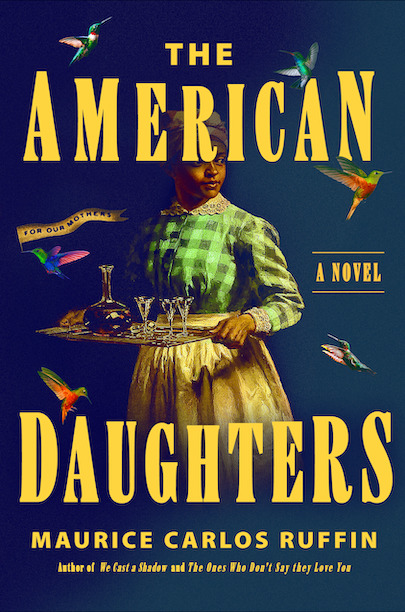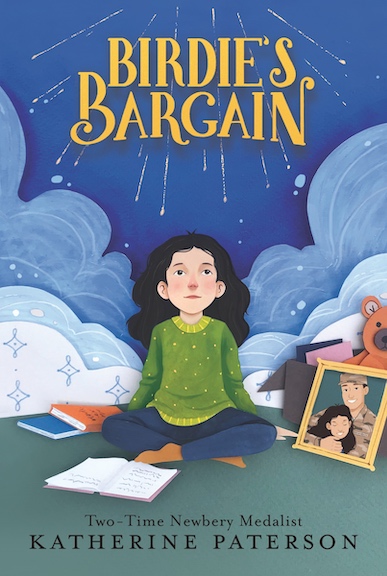Math as Muse
Rationality and creativity converge in Stephen Ornes’s Math Art
“Mathematics has an intrinsic aesthetic,” writes Stephen Ornes in Math Art: Truth, Beauty, and Equations. “Its truths are eternal.” Artists have always been drawn to those truths (think, for example, of Leonardo da Vinci’s Vitruvian Man), and Ornes sets out to survey the remarkable breadth of contemporary art that’s fueled by a fascination with math.
 By Ornes’s own admission, it’s a limited survey. “If you think of this field of math art as an infinite forest,” he says, “then imagine we’re on a brief hike, and this book is your dedicated, slightly kooky dendrologist, pointing at individual saplings and marveling at tortuous patterns in the bark.” His main criteria for including an artist’s work: it must be “powered by mathematical inspiration,” and it must be something more than a mere model or visualization. Nearly all the artists he discusses are living, and most are American or reside in the United States.
By Ornes’s own admission, it’s a limited survey. “If you think of this field of math art as an infinite forest,” he says, “then imagine we’re on a brief hike, and this book is your dedicated, slightly kooky dendrologist, pointing at individual saplings and marveling at tortuous patterns in the bark.” His main criteria for including an artist’s work: it must be “powered by mathematical inspiration,” and it must be something more than a mere model or visualization. Nearly all the artists he discusses are living, and most are American or reside in the United States.
Even within that limited set, however, there’s an impressive variety of art. Ornes introduces readers to John Sims, a mathematician and artist in Sarasota, Florida, who collaborated with local quilters on a stunning collection of quilt designs, each one expressing a pattern derived from the digits of π. Frank Farris, a mathematician in California, creates eye-popping wallpaper patterns based on non-Euclidean geometry. Robert Bosch, a professor of mathematics at Oberlin College, draws portraits with a single continuous line that never crosses itself. The technique derives from the Traveling Salesman Problem, a classic optimization puzzle.
Not all of Math Art’s creators are academics or trained mathematicians. Bjarne Jespersen is a Danish woodcarver whose seemingly impossible sculptures embody, in Ornes’s words, “a manual geometry that comes from spending time staring at a block of wood, thinking about the symmetries hiding within.” One of the most interesting artists in the book is Dorothea Rockburne, a native of Montreal who enrolled at Black Mountain College in North Carolina in 1950, where she mingled with the likes of Cy Twombly and John Cage. She also met Max Dehn, a mathematician who had fled Nazi Germany. Dehn is the one who introduced Rockburne to the mathematical concepts that have inspired and influenced her abstract art ever since.
 Most of the profiles in Math Art include interviews with the artists, so we get a sense of the personalities behind the work. Rockburne, for example, comes across as a bit of a youthful contrarian; Ornes describes her impatience at Black Mountain with both art-school textbooks and novels in which women were portrayed as “plodders, fools, or victims.” She may be the most compelling voice here for the complicated joy of engaging mathematics as a muse. Most people, as Ornes notes, cannot grasp the mathematical basis of Rockburne’s art, and this fact brings her a certain sorrow: “Why can’t you go where I go? It’s such a great place to be,” she says. “I’m not crazy. I know that I’m doing something. I’m standing on a new continent every day, even though nobody else knows what I’m doing.”
Most of the profiles in Math Art include interviews with the artists, so we get a sense of the personalities behind the work. Rockburne, for example, comes across as a bit of a youthful contrarian; Ornes describes her impatience at Black Mountain with both art-school textbooks and novels in which women were portrayed as “plodders, fools, or victims.” She may be the most compelling voice here for the complicated joy of engaging mathematics as a muse. Most people, as Ornes notes, cannot grasp the mathematical basis of Rockburne’s art, and this fact brings her a certain sorrow: “Why can’t you go where I go? It’s such a great place to be,” she says. “I’m not crazy. I know that I’m doing something. I’m standing on a new continent every day, even though nobody else knows what I’m doing.”
Ornes, of course, is seeking to remedy that incomprehension with this book, and he’s clearly up to the task. A respected science writer who lives in Nashville, he has an engaging style and a gift for explaining complex ideas simply yet without a hint of condescension. His cheerful, plain-language tutorials here on concepts like fractals, the Fibonacci sequence, and the golden ratio may not interest the math whizzes among us, but anyone who struggled with high-school math or science will appreciate them as an invaluable aid to understanding the array of work the book explores.
In Math Art’s introduction, Ornes describes a 2013 experiment in which mathematicians and non-mathematicians alike were shown a collection of equations while their brains were scanned with an MRI machine. The mathematicians’ brains showed a distinctive surge of activity in the orbitofrontal cortex—the part of the brain that responds to art, music, and pretty faces. Clearly, mathematics contains the key to a beauty most of us can’t perceive. These artists give that beauty visible form, and Ornes serves as an excellent guide to the creative world they inhabit.

Maria Browning is a fifth-generation Tennessean who grew up in Erin and Nashville. Her work has appeared in Guernica, Still, Hippocampus, and The Los Angeles Review of Books. She’s the managing editor of Chapter 16.


